PTT Stick Grip
Ray Allen Stick Grip
created April 21, 2015
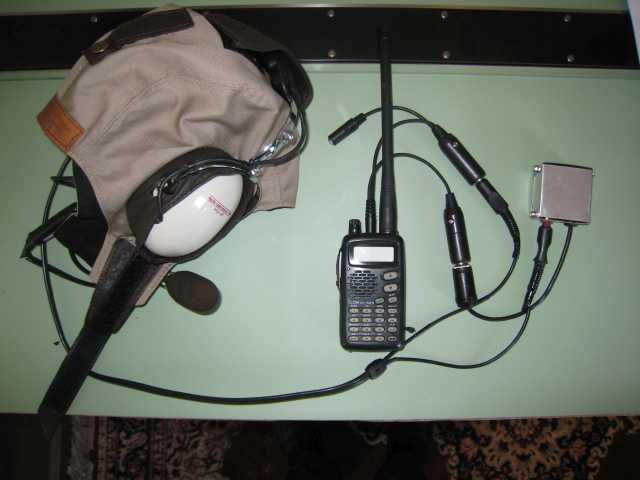
This is the homely, inexpensive, simple little radio setup that I use when I fly out of towered fields or when I otherwise need to have a radio aboard. Not in the picture is a portable 2-place Sigtronics intercom that I use when I fly a passenger, but there is so much black spaghetti in the cockpit with all that stuff that I try to avoid it. Simple little Icom IC-A23 and a basic headset. Connecting the two I have an Icom headset adapter and the jack for a remote push-to-talk (PTT) switch is hanging free at the top of the setup. The only oddball component is the little aluminum project box that I cut out and bent up to contain a small Radio Shack impedance matching transformer. The audio output from the handheld wants to see 8 ohms but the receivers in the headset are 300 ohms, so the transformer makes them friendlier to each other and it raises the headset volume so I can actually hear something. Without the impedance matching the audio was so feeble I had to reduce power and duck behind the windscreen to just barely make out what I was hearing. This is much better. The part about the whole radio setup that I never did like was the Velcro-attached PTT with the coiled cord, and after it started falling apart I threw it against the hangar wall and decided to get a real PTT. Having heard good things about the Ray Allen grips, I purchased their G101 model, which is their simplest and least expensive at $36. I like it!
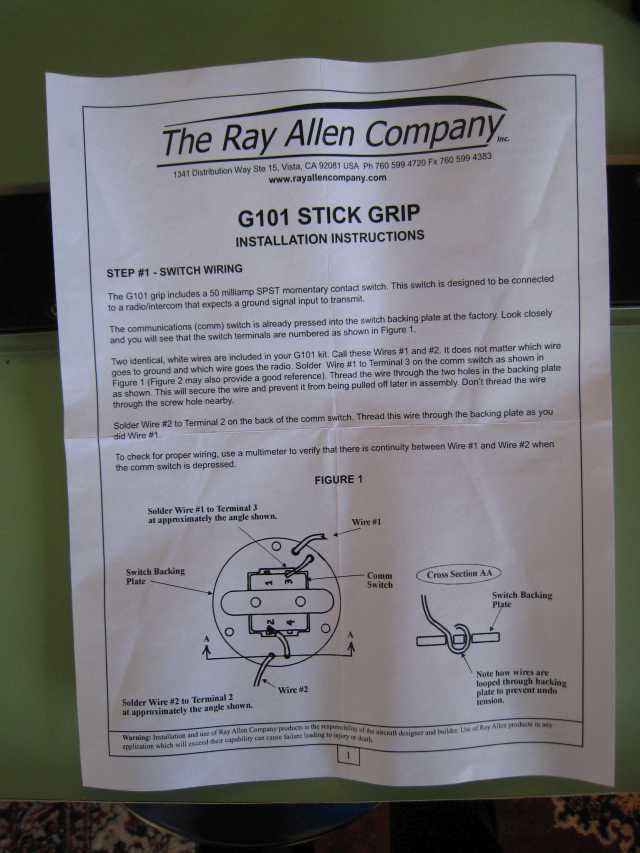
Here's the front page of the stick grip instructions...
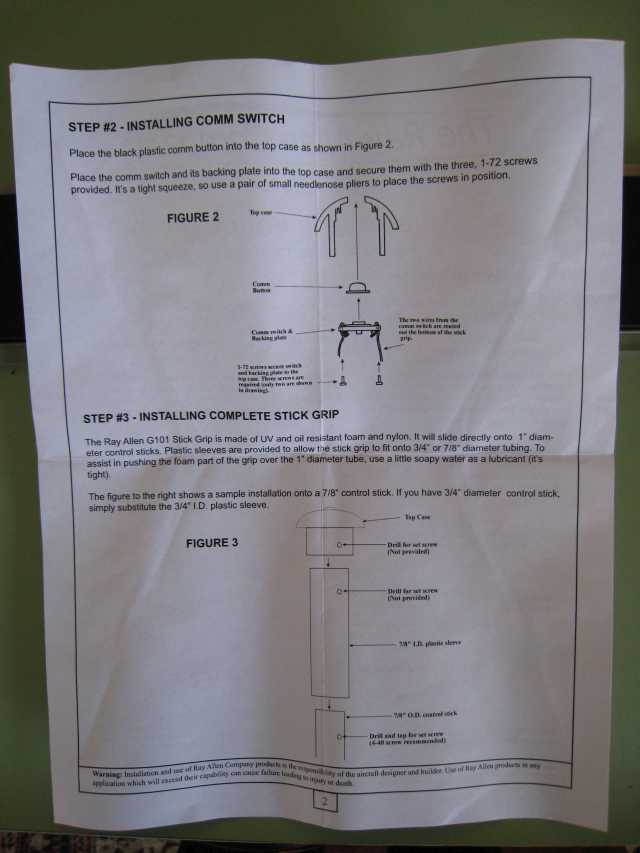 ...and here's the flip side. Pretty simple.
...and here's the flip side. Pretty simple.
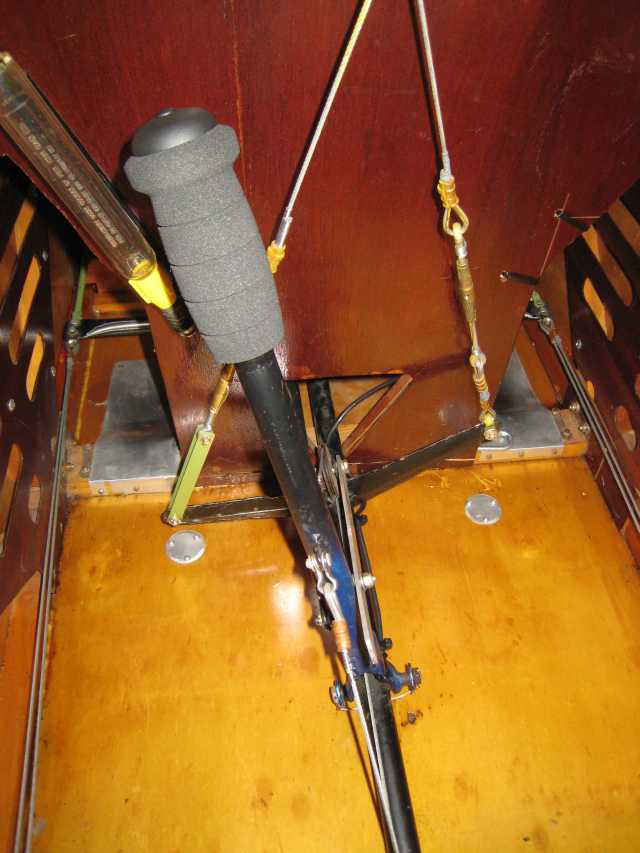 The finished installation, sort of. Shielded, twisted-pair wire from the PTT down inside the stick, out the bottom of the stick and along the underside of the walking beam forward, then up the starboard edge of the plywood front seat back. There were a couple of holes in the plywood already and they turned out to be just fine for zip-tying the wire up along the plywood to get to the fuselage side. I may do something cleaner and more permanent than the zip-ties, but maybe not. Fuel sampler in its holder on the port side. This type of sampler has a screwdriver tip on the end, which is very handy at times.
The finished installation, sort of. Shielded, twisted-pair wire from the PTT down inside the stick, out the bottom of the stick and along the underside of the walking beam forward, then up the starboard edge of the plywood front seat back. There were a couple of holes in the plywood already and they turned out to be just fine for zip-tying the wire up along the plywood to get to the fuselage side. I may do something cleaner and more permanent than the zip-ties, but maybe not. Fuel sampler in its holder on the port side. This type of sampler has a screwdriver tip on the end, which is very handy at times.
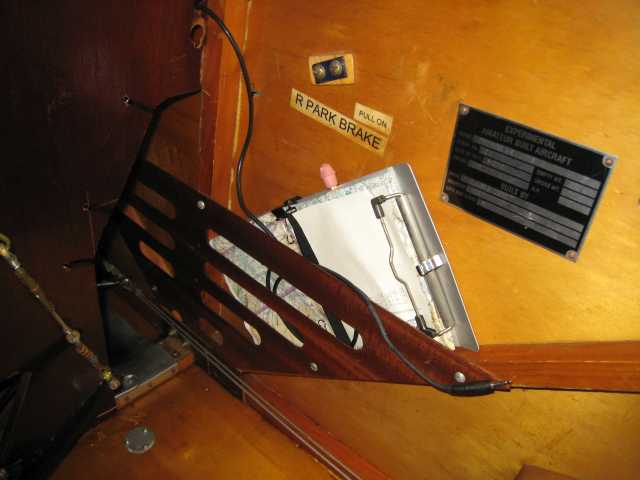 Here's the plug end of the wire, which I keep tucked in this map pocket. Visible here are the holes and zip-ties holding the wire as it comes up the seat back. While flying, I don't have a radio holder so I use the belt clip on the handheld to clip it to the edge of the map pocket. I can't see the readout or get to the buttons with it down there, but I usually only need to make one radio change heading out (ground to tower) and usually tower lets me stay on their frequency taxiing back so I don't even need to change frequencies again. Obviously the parking brakes are long gone, but I can't remove the hardware because the nuts are behind the fabric and they spin when I try to remove the screws. I should do it though... it's useless clutter. The labels, too. It just means sanding and re-varnishing.
Here's the plug end of the wire, which I keep tucked in this map pocket. Visible here are the holes and zip-ties holding the wire as it comes up the seat back. While flying, I don't have a radio holder so I use the belt clip on the handheld to clip it to the edge of the map pocket. I can't see the readout or get to the buttons with it down there, but I usually only need to make one radio change heading out (ground to tower) and usually tower lets me stay on their frequency taxiing back so I don't even need to change frequencies again. Obviously the parking brakes are long gone, but I can't remove the hardware because the nuts are behind the fabric and they spin when I try to remove the screws. I should do it though... it's useless clutter. The labels, too. It just means sanding and re-varnishing.
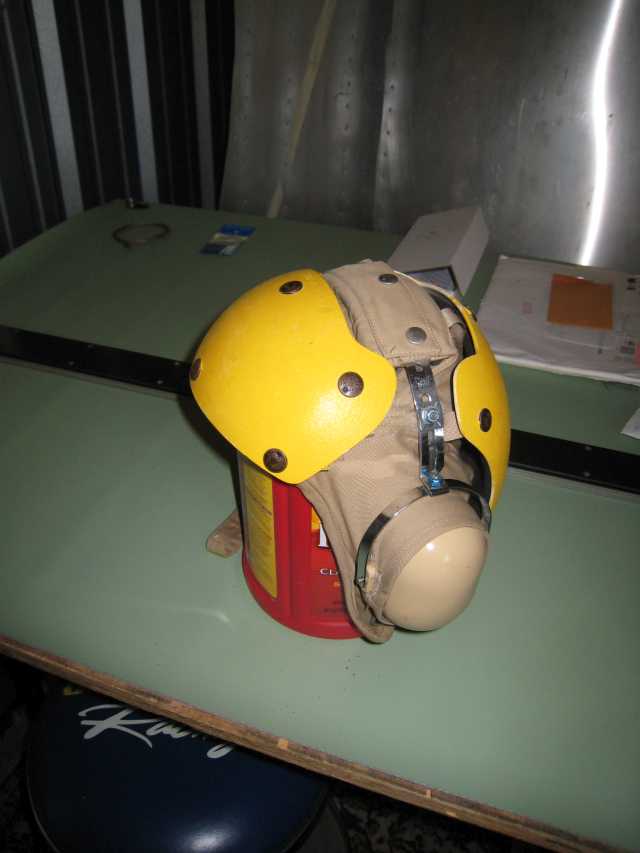 Here's what I wear when I'm flying NORDO, out of controlled airspace, and just want some hearing protection and head covering. Surplus carrier flight deck crewman's helmet. Complete with goggles, I got it for less than $40 on eBay and those are genuine David Clark hearing protectors. Took the impact panels off, painted them to match Scout's yellow paint, and we're good to go. Thousands of Navy carrier deck crew can't be wrong ;o)
Here's what I wear when I'm flying NORDO, out of controlled airspace, and just want some hearing protection and head covering. Surplus carrier flight deck crewman's helmet. Complete with goggles, I got it for less than $40 on eBay and those are genuine David Clark hearing protectors. Took the impact panels off, painted them to match Scout's yellow paint, and we're good to go. Thousands of Navy carrier deck crew can't be wrong ;o)






